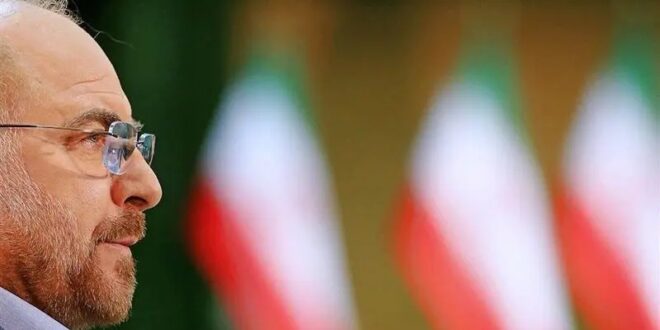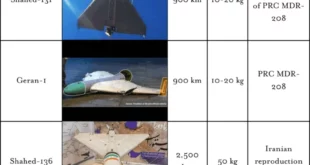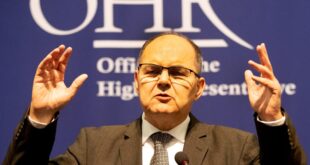In two weeks, Iran will hold a presidential election to choose the successor to Ebrahim Raisi, who was killed in a helicopter crash last month. The world is closely observing the country’s political landscape, anticipating who will rise as the next president of the Islamic Republic and what impact, if any, this will have on Iran’s future domestic and foreign policies.
Out of nearly 80 hopefuls who registered to run for the presidency, including four women, the Guardian Council has approved only six candidates. These individuals are permitted to campaign until June 27, just one day before the vote. The approved list of candidates comprises Masoud Pezeshkian, Mostafa Pourmohammadi, Amir-Hossein Ghazizadeh Hashemi, Mohammed Baqer Qalibaf, Saeed Jalili and Alireza Zakani. This narrowed field reflects the council’s stringent criteria, as well as the high stakes of the upcoming election.
The selection criteria employed by the Guardian Council heavily emphasize adherence to the religious and revolutionary principles that underpin the Islamic Republic. Candidates are assessed on their commitment to these values, which are considered essential. This process ensures that only those who align with the core tenets of the revolution are allowed to stand for election.
One striking aspect of the Guardian Council’s final selection is the preponderance of hard-liners among the approved candidates, with Pezeshkian, a member of parliament for Tabriz, being the only notable exception. The political landscape is thus heavily skewed toward hard-line ideologies, which dominate both the parliament and the legislative branches. Should a hard-liner be elected as president, it would result in a consolidation of power, with all branches of government operating under unified hard-line control, thereby intensifying the government’s conservative trajectory.
The hard-liners are known for their staunch adherence to the revolutionary principles of the Islamic Republic and for advocating for a more rigid interpretation and implementation of these ideals. They adopt a firmer stance toward the US and the West, rejecting any form of negotiation or compromise, particularly regarding Iran’s nuclear program. Concessions are perceived as a sign of weakness. Domestically, hard-liners push for the enforcement of strict religious laws and, regionally, their views align closely with the objectives of the senior cadre of the Islamic Revolutionary Guard Corps, further cementing their influence.
The Iranian government faces significant pressure on multiple fronts. Regionally, escalating tensions with Israel have led to a dangerous tit-for-tat exchange of military actions, heightening the risk of broader regional destabilization and international repercussions. Domestically, economic and political challenges add to the government’s burdens. In this context, the election of a hard-liner as president is viewed by some leaders as a strategic move to consolidate power across all branches of government, thereby providing a unified and potentially more resilient front against these multifaceted pressures.
When analyzing the likely outcome of the presidential election, the preference of Supreme Leader Ali Khamenei is the most critical factor. Recent historical patterns suggest that the supreme leader’s favored candidate often emerges victorious. For instance, Raisi was widely considered Khamenei’s preferred choice and even a potential successor. His election was perceived by many as more of a selection orchestrated by the ruling elite to ensure continuity and alignment with the supreme leader’s vision.
Khamenei’s preference for presidential candidates is most likely rooted in the desire to maintain control and ensure that the president aligns with the overarching objectives of both himself and the IRGC. An ideal president in the eyes of Khamenei is one who does not overshadow or challenge the established agenda and does not take the spotlight or seek independent political power. This preference for loyalty and obedience over independent leadership is likely why figures such as Mahmoud Ahmadinejad and Ali Larijani, who are often seen as autonomous in their political ambitions, did not make the Guardian Council’s list.
Among the six approved candidates, Qalibaf and Jalili stand out as the most likely to align with the supreme leader’s criteria. Qalibaf, a principlist within Iran’s political spectrum, has demonstrated unwavering loyalty to Khamenei. His career trajectory, from serving in the IRGC to becoming the first military commander elected as mayor of Tehran and later the speaker of the Iranian parliament, underscores his deep-rooted connections and endorsements from the highest echelons of power.
Similarly, Jalili, an ultraconservative and former chief nuclear negotiator, has significant credentials, including running the supreme leader’s office for several years. He is often referred to as “a living martyr,” having lost a leg during the Iran-Iraq War while he served in the Basij. Jalili was also Khamenei’s personal representative on the Supreme National Security Council.
Both these candidates embody the ideological purity and loyalty valued by the supreme leader, making them strong contenders in the upcoming election.
In a nutshell, the election in Iran comes at a critical juncture, especially following the sudden death of Raisi. The Guardian Council’s stringent vetting process has narrowed the candidates to six, predominantly hard-liners, underscoring the government’s emphasis on loyalty to revolutionary principles and the supreme leader. This likely consolidation of conservative power could further entrench Iran’s hard-line stance both domestically and internationally. Candidates like Qalibaf and Jalili, who demonstrate unwavering loyalty and ideological alignment with Khamenei and the IRGC, are favored.
 Eurasia Press & News
Eurasia Press & News



